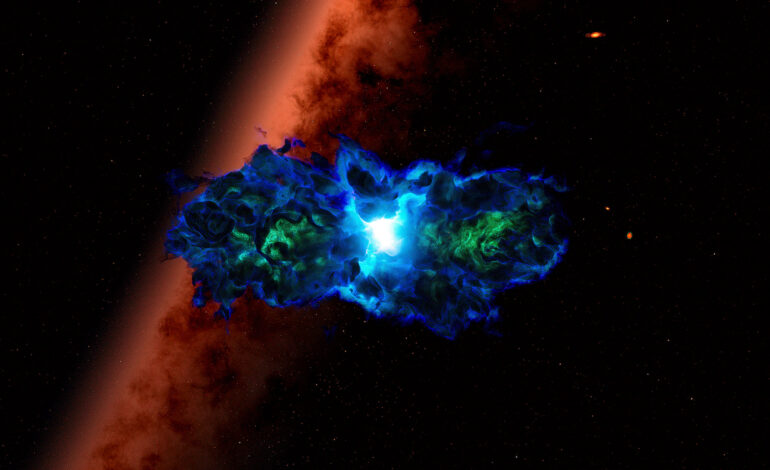James Webb Telescope Detects Potential Dark Stars in Early Universe

Astronomers using NASA’s James Webb Space Telescope (JWST) have identified what may be the universe’s first “dark stars,” massive celestial bodies formed shortly after the Big Bang. A recent study published in the Proceedings of the National Academy of Sciences presents evidence suggesting these primordial stars, powered by dark matter, existed only a few hundred million years following the Big Bang.
The study’s lead author, astrophysicist Cosmin Ilie of Colgate University, described supermassive dark stars as “extremely bright, giant, yet puffy clouds made primarily out of hydrogen and helium.” He explained that these stars are supported against gravitational collapse by small amounts of self-annihilating dark matter contained within them. Dark matter, which constitutes approximately 25 percent of the universe, remains elusive, as it has yet to be directly observed; its presence is inferred through its gravitational effects on visible matter.
The existence of these supermassive dark stars could provide explanations for the bright and surprisingly abundant galaxies observed in the far reaches of the universe by the JWST. Furthermore, the black holes that form from these dark stars might shed light on the origin of distant quasars, which are extraordinarily luminous galactic nuclei powered by black holes.
The concept of dark stars first emerged in the late 2000s. Researchers have posited that they may result from Weakly Interacting Massive Particles (WIMPs), a leading candidate for dark matter. These particles are thought to annihilate one another, generating heat that manifests as the bright stars observed today. The conditions present a few hundred million years after the Big Bang were conducive for the formation of these enigmatic stars.
In the statement, coauthor Katherine Freese, an astrophysicist at The University of Texas at Austin, emphasized the significance of these findings. “For the first time, we have identified spectroscopic supermassive dark star candidates in JWST, including the earliest objects at redshift 14, only 300 million years after the Big Bang,” she said. These early dark stars, weighing approximately a million times that of the Sun, are crucial for understanding dark matter and serve as precursors to the supermassive black holes detected by the JWST, which remain difficult to explain.
In 2023, Freese and her team identified several candidates for supermassive dark stars through the JWST’s Near-Infrared Camera (NIRCam), which captures high-resolution images in near-infrared wavelengths. The recent paper builds upon those discoveries, utilizing data from the telescope’s Near-Infrared Spectrograph (NIRSpec). This instrument is designed to study the universe’s earliest epochs by capturing multiple near-infrared bands simultaneously.
The latest research has identified four spectroscopic dark star candidates, including one that ranks as the second most distant object ever observed. Ilie noted that the team may have discovered a “potential smoking gun signature of a dark star,” pointing to a “1640 Angstrom absorption dip” in the spectrum of one of the candidates. This measurement, with one Angstrom equating to one hundred-millionth of a centimeter, is typically used to express light wavelengths.
Despite these promising findings, significant research remains necessary to confirm the existence of supermassive dark stars in the early universe. The latest results hold substantial potential for advancing understanding of dark matter, one of the most intricate mysteries confronting astronomers today. The implications of this research could reshape our comprehension of cosmic evolution, highlighting the enduring quest to unlock the universe’s secrets.






